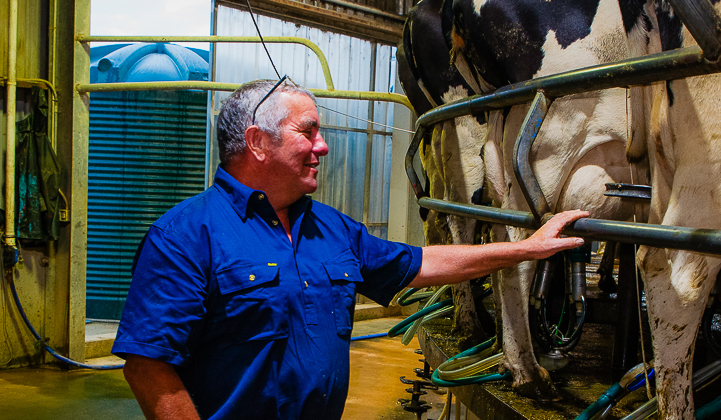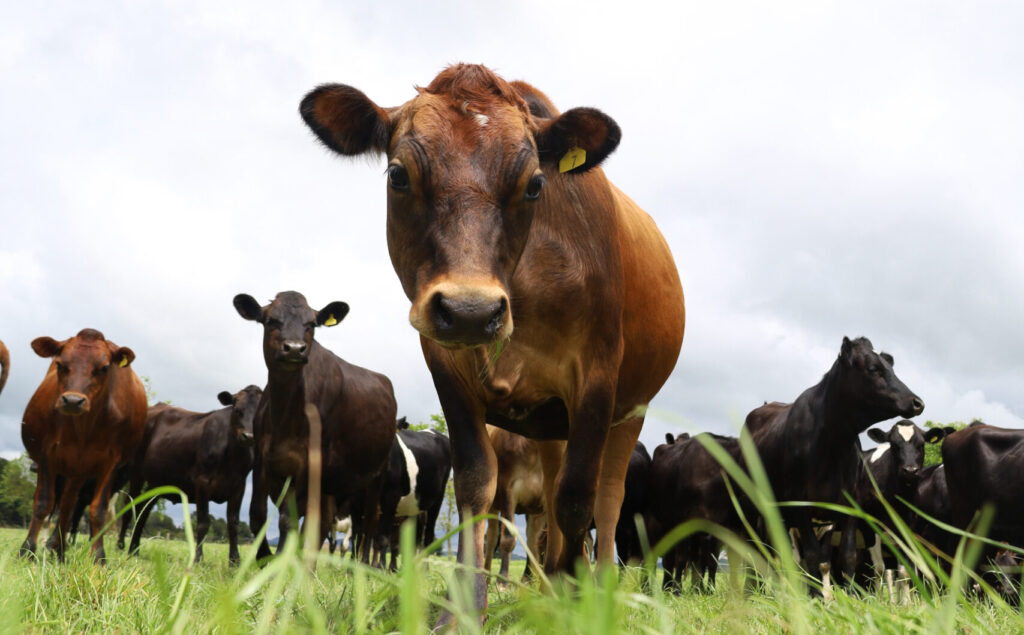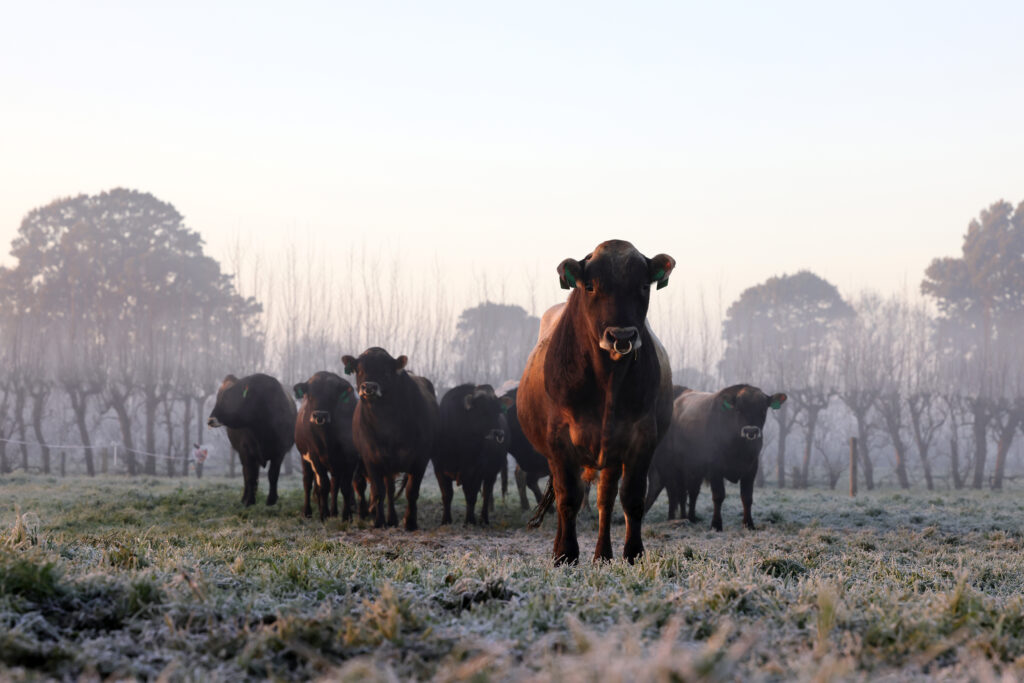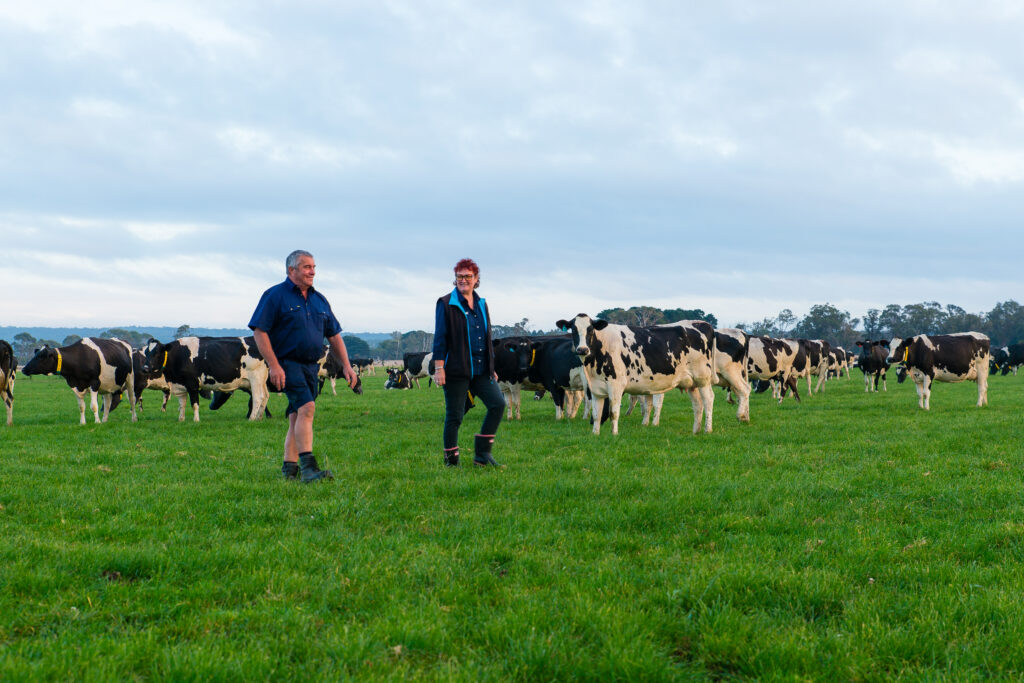Australian dairy country doesn’t get much more traditional than South Purrumbete, located in the Western Districts. Dairy farms have operated in this area for well over 100 years, with top quality soil and an average rainfall of 800ml a year creating the perfect recipe for grass growth and productivity.
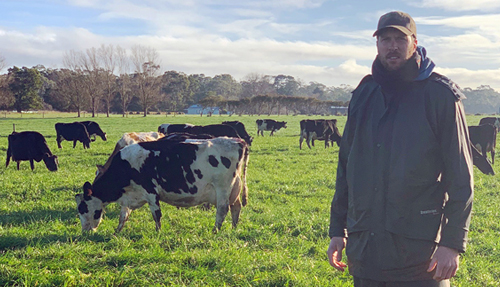
The Hinkley name is well known in the South West area and has strong dairy connections. Paul Hinkley is continuing the family legacy on their 270 hectare dryland property in the rolling hills of South Purrumbete about 20 mins from Camperdown. Paul’s parents farmed on a different property in the area and in 2010 the family purchased the current land, recently expanding further with the acquisition of neighbouring blocks. This has allowed Paul to increase from 400 to 420 milking cows grazing 270 hectares on the home farm with another 110 hectare out paddock used to run the young stock, some dry cows and to grow fodder. They operate the farm with one full time staff member and two casuals with Paul’s father, Mick, managing the young stock on the out paddock.
“A big focus is fertility and getting the cows calving at the right time”
In his younger years, Paul moved away from the farm and after finishing school completed a building apprenticeship which eventually lead to time in Geelong with his now wife Sophie, focusing on footy, his building career and travelling overseas. Paul says “I always knew I would come back and although it was good experiencing other things, I have loved coming back to the farm”.
The Hinkley’s have always focused on a lower input pasture-based system which, most importantly, is a profitable operation. Paul says, “Our focus is really profit over production. We make a profit year in, year out and pride ourselves on a low-cost resilient system. We could produce a lot more milk if we wanted but it might not make any more money and it can lead to a more complex, higher risk system.” Paul adds “It’s a system that works for us – there are a lot of things you can’t control such as the weather and milk price, but you can control your own costs.”
With costs at $3.90ms/kg including labour and lease, Paul has been able to expand when the industry as a whole has been having its challenges.
They currently feed around 400kg of grain mainly throughout the winter.
As the stocking rate is 1.5 cows to the hectare, the focus is on growing and utilising as much pasture as possible, and whilst per cow production is not a big driver they would like to slowly increase this to around 450ms/kg/cow from the current 405kg/ms/cow level.
“We all run pretty low cost seasonal calving systems and having this group of farms to benchmark and bounce ideas off is a great way to know you’re on the right track or need to improve in certain areas.”
Paul keeps in close contact with a group of farmers operating a similar type of system in the area who use farm consultant Kevin Maher to support them. “The mean calving date is really important for us and we aim for the 16th of June. That sets up our season so we can milk without much supplement and cows are nearly fully fed on grass all the way through.”
The Hinkleys have used LIC genetics for a few years now, starting off with the Holstein-Friesian bulls but most recently moving to more KiwiCross™ bulls. Paul sees genetics as an area he can continue to improve and make gains. “The type of cow we milk in our system is really important, having a cow with big capacity, high components and excellent fertility is key. In the early days when we were changing over to using LIC more and going towards a crossbreed cow you could really see the difference. The original more Holstein type animals just did not forage as aggressively and in turn struggled to get in calf quickly.”
Paul reveals, “Now our overall quality is better and is also being reflected in the components and our in-calf rates, where last season we achieved 72% six-week in calf and 6% empty with almost no intervention. This allows us more options and the chance to do more selective culling, usually selling some of the late calving cows for pretty good money, which in turn keeps our calving pattern tight.
“We have been using pretty good bulls of late and we are really happy with the results, bulls like Sierra, Hammer, Sovereign, Obsidian and Solaris are being well used and are starting to come through. The Solaris type cow is the kind of cow we are aiming for with huge capacity, around 450kg liveweight, top components and low SCC, they are just really hard working no fuss cows that have great longevity.”
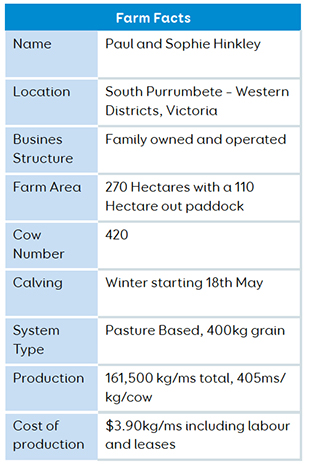
Paul notes, “We know we can still improve our breeding as some of our other discussion group members have been using LIC genetics for longer and are getting better production. With more of these types of genetics and other improvements, our target is to achieve 100% of a cow’s bodyweight in milk solids. This year we may do more herd testing to make sure we are using the best bulls and can then drop out the lower performing cows which will improve the quality even faster”. With spring around the corner and the arrival of their new baby girl Holly, Paul and Sophie are looking forward to a little downtime after another busy calving and mating period. The Hinkley name is alive and well in the Western Districts of Victoria and with ‘continued improvement’ the name of the game for Paul, the rewards from all their efforts can be seen not only now but into the future.
